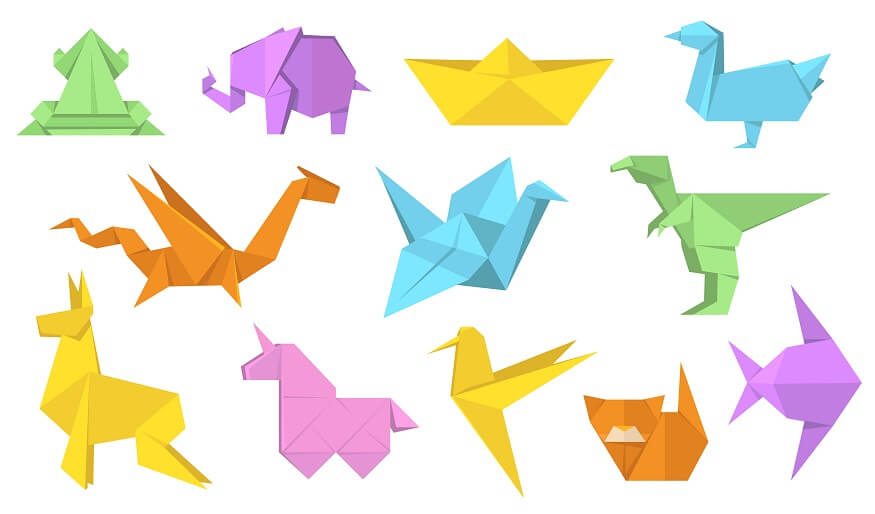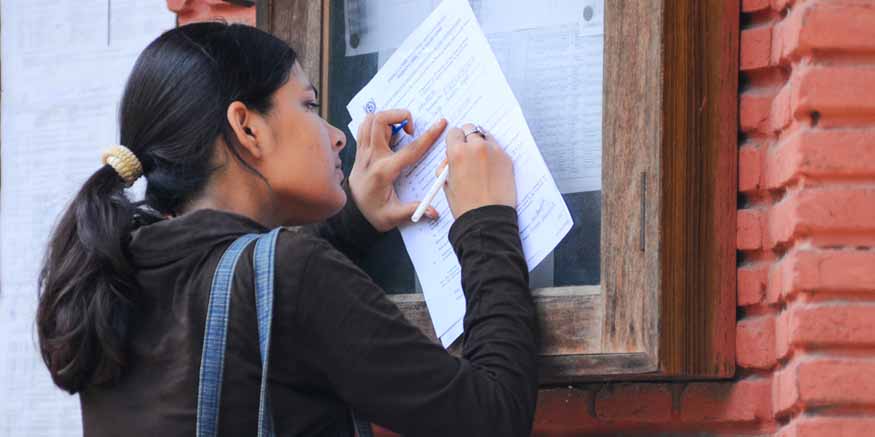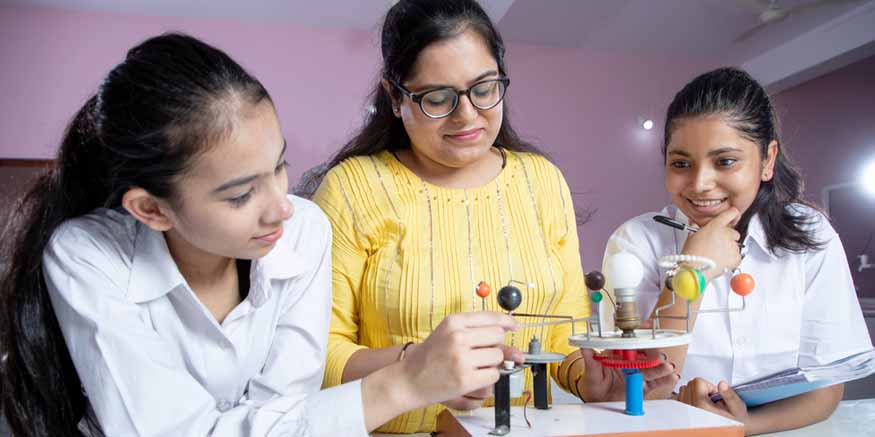Today we will learn what origami is. Folding paper is a Japanese art called Origami. Origami is a term used for all modern day paper folding practices, regardless of their culture of origin. In simple words, origami is known as paper folding, and as the name suggests it is the art of folding paper to create two-dimensional and three-dimensional objects.
Origami is Japanese, and it is essentially just folding paper. The name comes from the Japanese words “ori,” which means folded, and “kami,” which translates to paper. Until the 1880s, though, people called origami ‘kata,’ which translates to folded shapes. Since origami paper craft is the art of paper folding, it is hard to trace when it first began.
People originally made origami paper craft solely for the decoration of temples and shrines. Today, it is considered a craft or an art form and at times used as a fun activity to learn geometry. There are three types of origami:
- Single-sheet origami
- Modular origami
- Composite origami
Here is an origami paper art buying guide:
- Standard Origami Paper or “Kami”: The Best Paper for most folders and models. There are a variety of origami paper and they come in various sizes, anywhere from 3 inches all the way up to 14 inches, all standard paper shape is square and can be used for almost all types of origami. It holds creases very well and is very easy to use. Nowadays, origami paper comes in many vibrant colours and patterns, however most of the packs contain the standard 6-inch square paper.
- TANT Paper: The best paper for showcasing your origami. TANT is a very popular solid-colour paper with the same colour on both sides and is also known as double-sided paper. TANT origami papers are slightly heavier than regular sheets of paper. The paper manages to have the perfect feel and strength for folding and is not too thick to work with. The meaning of the term TANT is “a lot,” which means an abundance of colour. TANT paper became famous because it is a dyed fibre paper and it does not break even after repeated creases; it maintains a beautiful surface texture. It is an incredibly versatile paper that is stiff, yet thin enough for origami and has a delicate textured surface.
- Duo Colour Standard: A Classic Two-Colour Option. Unlike the usual one-coloured side and the other a white side, the back of this paper is a bright colour, different from the front. The assortment ideally comes with 14 two-colour patterns and 40 sheets in a variety of bright colours. This paper is called DUO paper.
- Washi: A Paper with Texture. The term Washi is used to describe paper that uses local fibre, through hand-made processing in the traditional way. To make it, the fibres from the inner barks of a gampi tree, or the mitsumata shrub, or the mulberry bush are extracted. Washi has been traditionally used in lamps and screens and recently in shutters and blinds because of its translucency. Washi paper is also used for letter writing and books. It is often used to make paper screens, room dividers, and sliding doors and has been a part of home interiors for a long time.
- Tissue Foil Paper: An option for advanced folders. Tissue Foil is a rare product. The stiffness and strong memory of the foil are a great combination. It has the look and agility of tissue paper, which makes it a promising choice for paper-folding needs. They have some major advantages, such as the face has colour and a delicate pattern, sufficient to provide a great rendering for the model without any addition, unlike other foil papers which are non-realistic and have a pure white face that often requires hiding and need to be glued by a tissue paper.
Though there are many other options available, most of the packs come with the standard 6-inch square paper. These papers are designed to have clean folds, to precisely hold creases, and be strong enough to last for a long time. Origami is a great idea for a party, for kids at school functions, or as a rainy-day family activity.
Kami is the best paper for beginners and for casual folding practice. Some may ask if a certain paper is needed for origami. Well, Origami paper is specifically made for origami paper crafts which makes it the perfect paper. Standard paper can be hard to fold or even cut out in shapes perfectly, similarly, card paper can be extremely difficult to fold and is known to crease around its folded edges, and newspapers degrade over time.
There are two main rules for origami: The first rule is the two-colour ability which means you can colour any crease or pattern with two colours without having the colours meet each other. The second rule is that the directions of the folds at any vertex, the number of mountain folds, and the number of valley folds will always differ by two.
Origami provides the benefit of strengthening the brain. It requires hand-eye coordination, and it aids the development of fine-motor skills and supports mental concentration. All of which stimulates the brain to develop to its full potential. Kids benefit when the visual and motor areas of the brains are activated by simply following instructions of the paper-folding.
Origami is a hobby for the young and old. Origami depending on the complexity of the model can be easy or difficult. It can be relaxing and mind-bending depending on your reasons for folding. Origami helps to aid problem-solving skills that are used by individuals of all ages daily. When people show interest in activities like origami it encourages kids as well to develop a hobby where they can be creative and be involved in group activities to build teamwork.
Also Read: Animal Crafts for Kids
Paper folding craft:
One must understand that there is a foundation of 10 to 12 basic folds and the manoeuvres are essential for origami some of which are: the rabbit ear fold, the reverse fold (inside and outside), the squash fold, the swivel fold, the pleat fold, the crimp fold, the petal fold, the sink fold (open, closed, and spread).
Mentioned below are the steps on how to fold paper:
STEP 1: Find a flat surface for the best and optimum fold quality.
STEP 2: Carefully lay the paper in front of you on a flat surface.
STEP 3: Hold one edge of the paper onto the folding surface firmly, but without damaging it.
STEP 4: To press down on the folded side of the paper, bring your finger to the top of the bend in the paper.
STEP 5: A pat on your back.
Amongst all the origami models, the “Orizuru” is the most famous. It represents a crane. Cranes have long lifespans and have been familiar to Japanese people as lucky animals since ancient times. Origami improves concentration and spatial awareness. When creating origami, the fingertips are used to create detailed objects. This helps improve concentration. Since it requires many folds on various sides of the paper, it helps children learn their numbers and practice counting. Hence, at EuroSchool, we encourage every student to learn new hobbies that can be beneficial lifelong.









